Contents
Leek is gaining popularity in garden plots and farms. One of the most popular varieties is the Karantansky onion, which gives a high yield and is adapted to various climatic conditions. The variety has a spicy taste and ripens late.
Features of the variety
Leek is a herbaceous horticultural crop that grows up to 40 cm in height. After planting, the plant forms a root system and a false bulb. The aerial part is a green feather arranged in a fan.
In the second year, the leek grows a peduncle with pinkish flowers collected in inflorescences. Seeds are harvested in August. Planting material remains viable for 2 years.
Description of the Karantan leek:
- late maturation;
- the period from the appearance of sprouts to harvest is 130-180 days;
- height 30-50 cm;
- cylindrical shape of a false bulb;
- the white part of the bulb is 10 to 25 cm long, 4 cm in diameter;
- powerful green feathers with a wax coating;
- delicate peninsular taste;
- plant weight from 200 to 350 g;
- high frost resistance;
- yield up to 5 kg from 1 m2.
Onion variety Karantansky is a dietary product. It is used fresh, added to homemade preparations for the winter. Onions retain their properties when frozen.
The culture is rich in vitamins and minerals, improves the activity of the digestive system and gallbladder. The variety Karantansky has a low calorie content, which allows it to be used in the diet.
Fresh leeks are used with caution in diseases of the duodenum and stomach, kidneys, bladder, the presence of kidney stones.
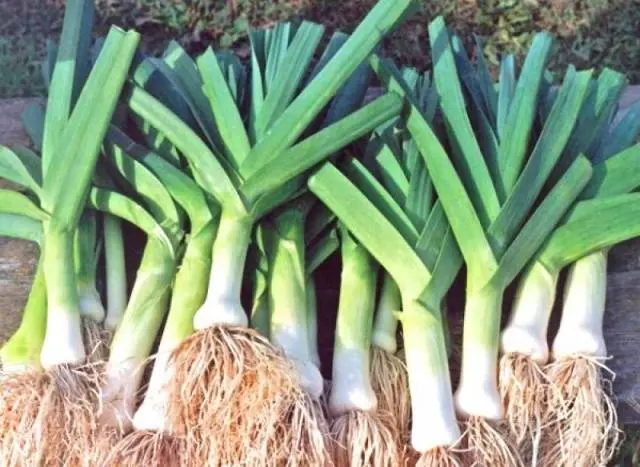
Cultivation from seeds
Onions of the Karantansky variety are grown by seed. In the middle lane and northern regions, seeds are planted at home and seedlings are obtained, which are transferred to the beds. In the southern regions, onion planting is carried out immediately in open ground.
Landing onions
To speed up the ripening process, Karantansky onions are grown in seedlings. At home, seeds are planted in March. For this, light fertile soil is prepared. It is obtained by combining turf and fertile land.
It is recommended to steam the soil in a water bath to get rid of pathogens. Another way to disinfect the soil is cold treatment. For several months, the substrate is kept in the refrigerator or outdoors at sub-zero temperatures.
To improve the germination of seeds of the variety Karantansky their pre-treatment allows. First, the material is kept for 12 hours in warm water. It is best to use a thermos to keep the water at a constant temperature. Then the seeds are washed with cold water and dried.
The soil is poured into containers, rammed and watered. Furrows 2 cm deep are made on the surface of the soil. Leek seeds are placed every 3 cm and covered with earth.
When grown from seeds, the Karantansky leek sprouts at a temperature of +7 °C. Before the formation of growths, it is important to keep the soil moist. The first shoots will appear in 10 days.
Care of seedlings
Onion sprouts Karantansky need certain conditions:
- access to fresh air;
- soil moisture;
- bright diffused light for 10 hours;
- daytime temperature 18-20 °C;
- temperature at night around 13 °C.
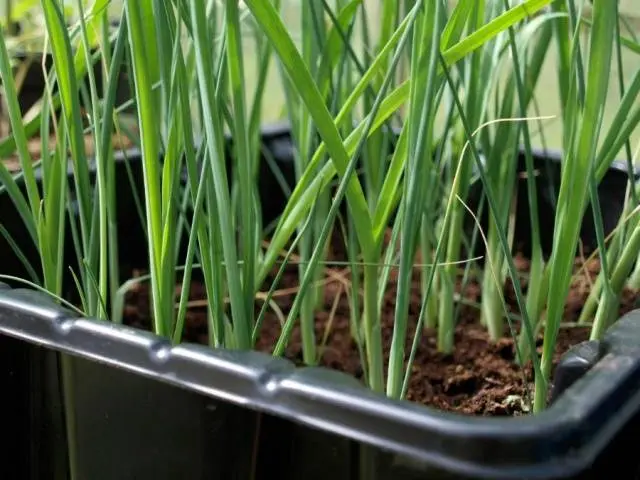
For watering leeks use warm settled water. It is best to spray plantings of the Karantansky variety from a spray bottle. With a short light day, you need to install additional lighting.
The root system of the leek is protected from hypothermia. Styrofoam or drywall is placed under the containers with landings. Seedlings of the Karantansky variety should not suffer from drafts and direct exposure to the sun. Shoots are thinned so that they do not interfere with each other.
6 weeks after the appearance of the sprouts, they begin to harden the Karantansky onion. Planting put on a balcony or loggia. Under the influence of fresh air, the culture will quickly adapt to natural conditions.
Landing in open ground
Seedlings of Karantansky leek at the age of 50-60 days are transferred to open areas. Pre-select a place for planting and prepare the soil. Work is carried out in the spring after warming up the soil. Winter planting is allowed to obtain early greenery.
Site Selection
For planting Karantansky leek, an open sunny area, remote from shrubs and buildings, is suitable. Culture prefers fertile neutral soils. Onions grow best on loamy soils fertilized with organic matter.
In autumn, they dig up the site and add 2 tbsp. l. complex fertilizer Nitrofoska per 1 m2 and a bucket of humus. Lime is added to the acidic soil.
Order of work
For planting leek Karantansky choose a cloudy warm day. Work is carried out in the following order:
- Furrows 5 cm deep are made in the garden. 30 cm are left between them.
- The onion is taken out of the container, the roots are cut to 4 cm and transferred to the furrows.
- Between seedlings leave 15 cm.
- The bulbs are covered with earth and watered.
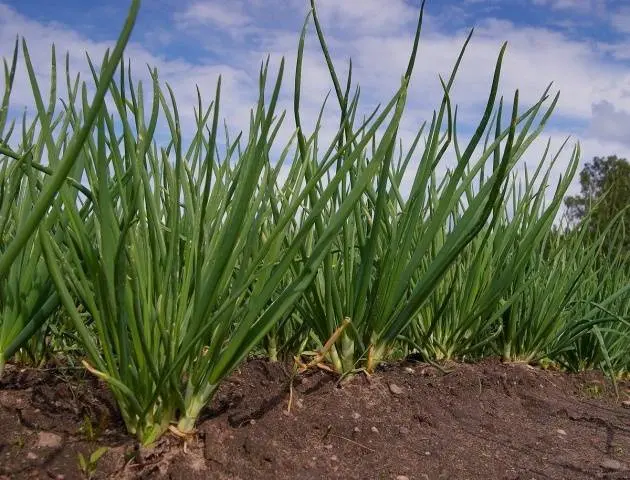
Podzimnaya landing
According to the description, the Karantansky leek is suitable for planting before winter. The plot is prepared in the summer, fertilized with rotted manure or compost.
In November, the seeds are planted in furrows 8 cm deep. Work is performed when cool weather sets in. With warming, the seeds of the Karantansky variety will germinate, and the seedlings will die when severe cold sets in.
Landings are mulched with humus or peat. When the snow falls, you need to additionally cover the beds with them. High snow cover melts longer, which will protect the Karantansky onion from spring frosts.
Leek Care
Variety Karantansky needs a regular supply of moisture. To obtain a high yield, the culture is fed with organic or mineral substances. Additionally, plantings are treated against pests and diseases.
Watering
Within 3 days after planting, the Karantansky leek is not watered. Then 1 m2 add 10-15 liters of water. Previously, it is defended in barrels.
It is important to prevent stagnant water in the beds. When watering, the drops should not come into contact with the feathers of the Karantansky onion.
After watering, be sure to loosen the soil to speed up the absorption of moisture and nutrients. Weeds are weeded in a timely manner.
The stalks of the Karantansky onion are spudded three times per season to form a large white “leg”. On the beds, you can pour a mulching layer of dry manure or dried grass.
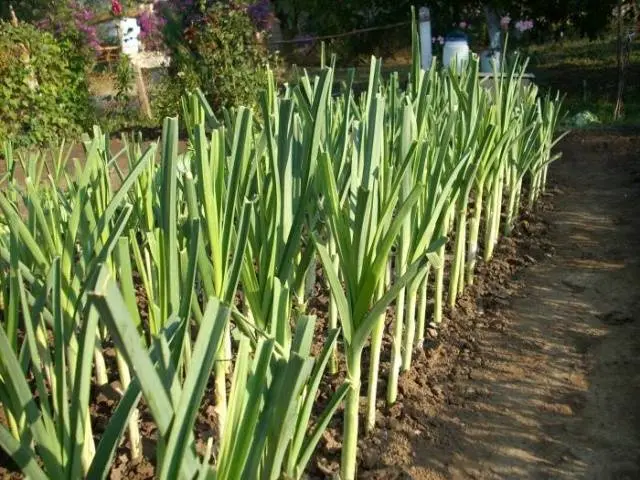
Additional fertilizing
Every 2 weeks, the Karantan leek is fed with organic matter or mineral fertilizers. The first treatment is carried out 3 weeks after transfer to the ground.
Feeding options for leeks:
- a solution of 5 g of urea and 3 g of potassium sulfate per 5 liters of water;
- infusion of chicken manure 1:15;
- mullein solution in a ratio of 1:10.
The resulting solutions are used immediately after preparation. For processing, choose a cloudy day, morning or evening hours.
Wood ash is a universal way to feed Karantansky onions. It is introduced into the soil during loosening. 1 m2 plot take 1 glass of ash.
Fighting diseases and pests
Subject to agricultural technology, the risk of diseases and pests is minimal. For the prevention and control of them, folk remedies and chemicals are used.
Variety Karantansky rarely suffers from diseases, however, excess moisture provokes fungal diseases. Under the influence of the fungus, the bulb is destroyed, the onion stems wither. To protect plantings, it is necessary to treat seeds and adult plants with a solution of Fitosporin.
The main pest of the crop is the onion fly. In mid-May, the insect lays its eggs in the soil, and a few days later the larvae begin to eat the core of the leek. To treat the site, wood ash or tobacco dust is used, which is sprayed over the onion. The pest is repelled by dry ground pepper.
Cleaning and storage
When grown from seeds, the Karantansky leek is harvested from August to October. Onions are dug in dry weather until the temperature drops below -5 ° C. Plants are left near the beds to dry. Leek is cleaned of lumps of earth, the roots are cut. Feathers are not removed so that the onion does not dry out.
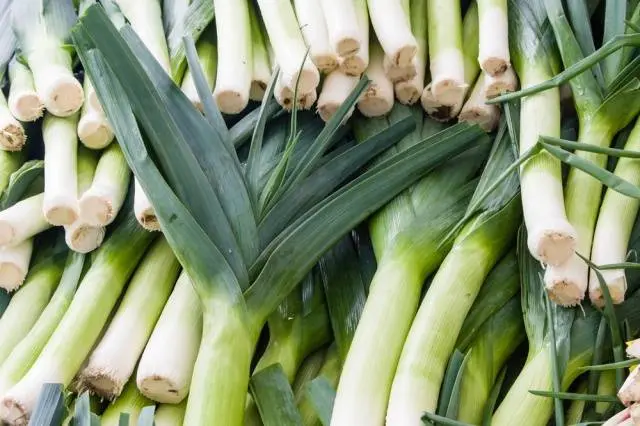
The leek crop is stored in boxes, where 5 cm of moistened coarse sand is poured. The bulbs are placed in a vertical position, sand is poured between them.
Variety Karantansky is stored at zero temperature and humidity of 85%. Onions are left in a greenhouse, transferred to the basement, cellar or balcony. In the refrigerator, the variety is kept in 8 pieces. in perforated plastic bags. Under such conditions, the shelf life of onions is 5-6 months.
If you leave the onion in the garden, then next year the plant will give arrows with seeds. They are harvested in autumn and used for planting.
Reviews of gardeners
Conclusion
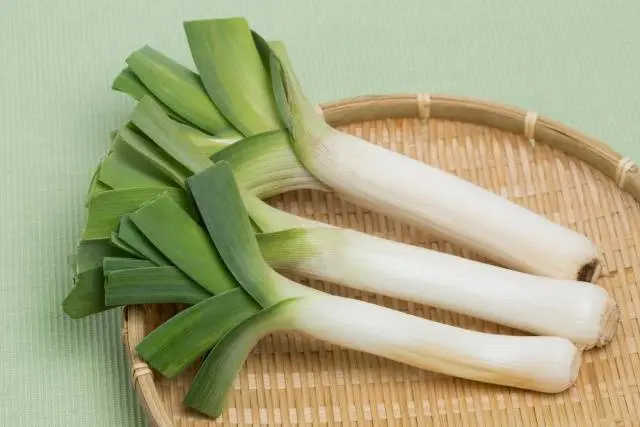
Leek Karantansky is grown from seeds that are planted at home or immediately in open ground. A more reliable way is to get onion seedlings. The culture requires abundant watering, loosening the soil and fertilizing.
The grade is attractive with good taste which remains fresh and after processing. Leek is rich in minerals and vitamins, useful for beriberi, exhaustion, overwork.









